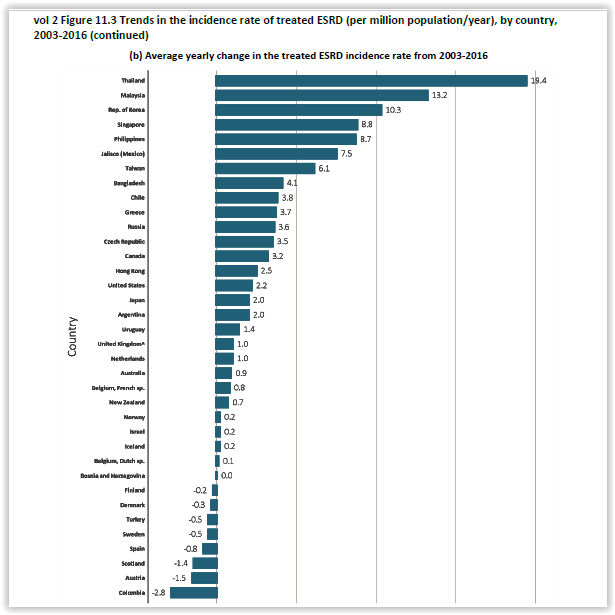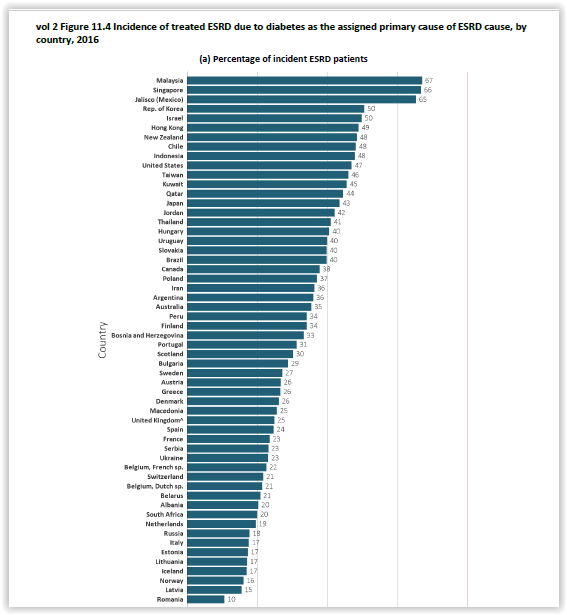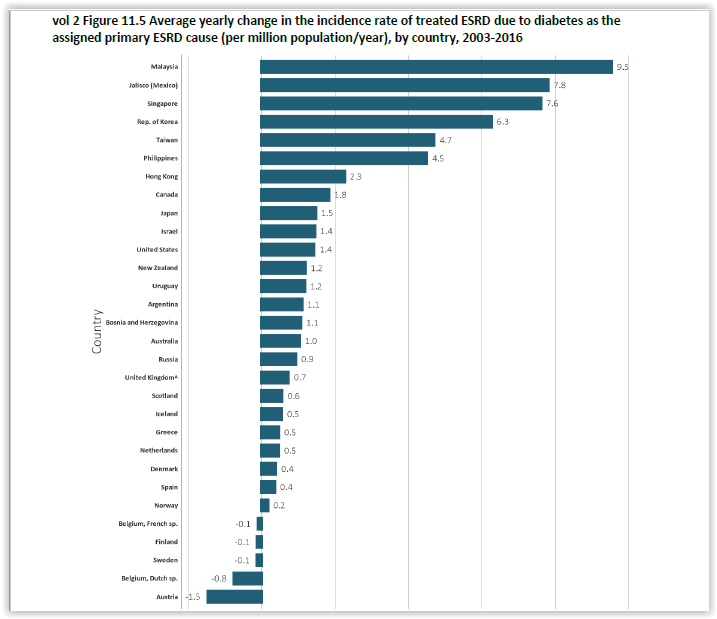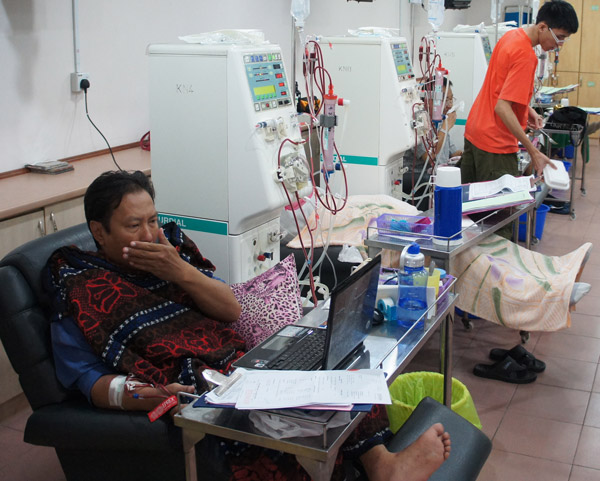KUALA LUMPUR, Jan 14 — Malaysia reported about a 13 per cent annual increase of treated kidney failure cases in the last decade, the second-highest rise of the incidence rate worldwide.
According to the United States Renal Data System annual data report for 2018, the incidence rate of treated end-stage renal disease (ESRD) in Malaysia rose an average of 13.2 per cent per year from 2003 to 2016, the second country in the list to record a high increase, after Thailand at 19.4 per cent.

The annual data report also stated that in 2016, Malaysia, Singapore and the Jalisco region of Mexico recorded the highest proportion of patients with new ESRD due to diabetes, at 67 per cent, 66 per cent, and 65 per cent, respectively. A large variation was seen worldwide; diabetes was the primary cause of ESRD for 20 per cent or less of new ESRD patients in South Africa, the Netherlands, Russia, Italy, Norway, Latvia, and Romania.
Patients living with ESRD — the last stage in chronic kidney disease, or kidney failure — have kidneys that only function at 10 to 15 percent of their normal capacity. They need dialysis or a kidney transplant to stay alive.

The greatest average yearly increase in diabetes-related ESRD incidence rates from 2003 to 2016 also occurred in Malaysia and Jalisco, where incidence rates of treated ESRD due to diabetes increased an average of 9.5 and 7.8 patients per million general population (PMP) per year, respectively, over the 14-year time period.

The incidence rate of treated ESRD for Malaysia in 2016, on the other hand, was 259 for every million people, making it the eighth highest country with treated ESRD cases. Taiwan was first with an incidence rate of 493 PMP, followed by the United States (378 PMP), Jalisco (355), Thailand (346), Singapore (333), the Republic of Korea (311), and Japan (296).
In 2016, among young adults aged 20 to 44 years, the United States reported the highest treated ESRD incidence rate at 134 PMP, followed by Malaysia at 111 PMP. Most countries recorded treated ESRD incidence rates of below 50 PMP in this young age group.

The largest proportionate increases in ESRD prevalence between 2003/04 and 2015/16 were observed in Jalisco, Thailand, and the Philippines, ranging from 213 per cent to 548 per cent, followed by rises of 113 per cent to 212 per cent in the Republic of Korea, Turkey, Brazil, Malaysia, and Russia.
The eight countries with the highest average annual increases in ESRD prevalence were Taiwan (122), Thailand (106), Jalisco (84), the Republic of Korea, Malaysia, Japan, and Singapore (61-76), and the United States (53).
The number of treated ESRD cases rose an average of two to four per cent per year in 30 per cent of all surveyed countries. Incidence rates remained relatively stable in approximately half of these countries since 2003, either declining modestly or rising by only one per cent or less per year.
Meanwhile, in 2016, transplantation for patients with ESRD ranged from less than 10 per cent in Peru, Serbia, Romania, Thailand, Malaysia, Taiwan, and Japan, to greater than 50 per cent in the Nordic countries of Denmark, Finland, Iceland, Norway, and Sweden, among others. Countries with the highest proportion of kidney transplants among ESRD patients also tended to have lower treated ESRD incidence rates.
The six countries with the highest yearly change in the prevalence of dialysis PMP from 2003 to 2016 were Taiwan (109) and Thailand (98), followed by Malaysia, the Republic of Korea, Japan, and Singapore (54 to 70 PMP per year). Haemodialysis continues to be the most common form of dialysis therapy in nearly all countries.
Countries reporting the lowest rates of kidney transplantation, at one to five PMP, included Bangladesh, Malaysia, Ukraine, Macedonia, South Africa, The Philippines, Peru, and Bulgaria.
Malaysia also recorded an average yearly decrease of 0.3 ESRD patients living with a kidney transplant PMP per year. Sweden, the median country, had an average yearly increase of 12.2 ESRD patients living with a kidney transplant PMP per year.
The percentage of ESRD patients living with a kidney transplant declined substantially in Chile, France, Malaysia, the Philippines, Russia, Singapore, and Thailand from 2003 to 2016.








